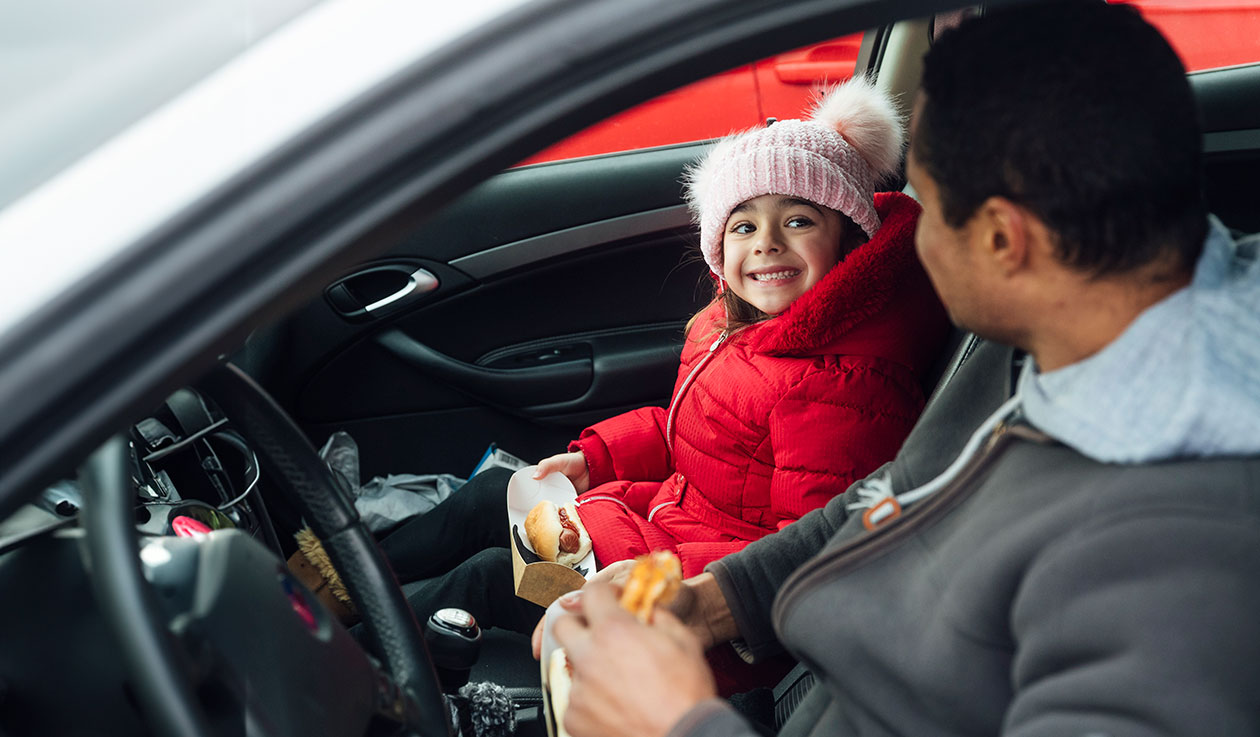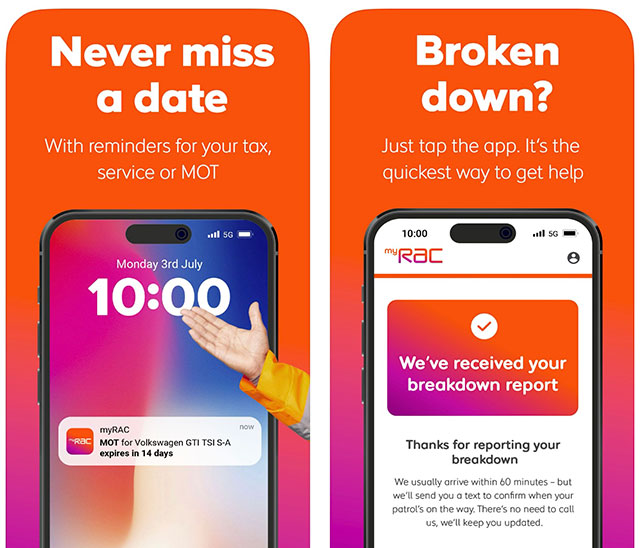
What to do if your car breaks down
What should you do if your car breaks down? This handy guide can help walk you through all the steps you need to know if your car has a breakdown, and who to contact if the situation is serious. It's another little help from Tesco Insurance.
Published:30 November 2023
With regular maintenance you can keep problems with your vehicle to a minimum, but sometimes breakdowns are unavoidable. When this happens, it’s important to be prepared so you can get back on the road as quickly and as safely as possible. We’ve put together some breakdown tips so you know what to do should your car ever fail you when you’re out and about.
If your car breaks down on a road other than a motorway:
- If possible, get your vehicle off the road and turn on your hazard warning lights to alert other drivers. If it's safe, you can also place a warning triangle in the road, on the same side, around 45 metres behind your vehicle to warn any oncoming traffic.If possible, get your vehicle off the road and turn on your hazard warning lights to alert other drivers. If it's safe, you can also place a warning triangle in the road, on the same side, around 45 metres behind your vehicle to warn any oncoming traffic.
- Keep your sidelights on if it is after dark, and make sure you're not standing anywhere that obstructs your lights from view.Keep your sidelights on if it is after dark, and make sure you're not standing anywhere that obstructs your lights from view.
- If you're able - and if it's safe to do so - you can attempt to make repairs. If you're in any doubt that it's safe, however, exit the vehicle along with any passengers and relocate to a safe spot to call for a breakdown service.If you're able - and if it's safe to do so - you can attempt to make repairs. If you're in any doubt that it's safe, however, exit the vehicle along with any passengers and relocate to a safe spot to call for a breakdown service.
If your car breaks down on a motorway:
- Pull into the hard shoulder as far off the road as possible, and turn your wheels to the left so they're pointing away from the motorway.Pull into the hard shoulder as far off the road as possible, and turn your wheels to the left so they're pointing away from the motorway.
- Put your sidelights and hazard lights on to warn other drivers, especially if it is after dark. Remember, you're not the only vehicle that might need to use the hard shoulder.Put your sidelights and hazard lights on to warn other drivers, especially if it is after dark. Remember, you're not the only vehicle that might need to use the hard shoulder.
- Make sure you and any passengers exit through one of the left-hand doors, but leave any pets in the vehicle. If you have children with you, keep a close watch on them and get them as far away from the road as quickly as possible.Make sure you and any passengers exit through one of the left-hand doors, but leave any pets in the vehicle. If you have children with you, keep a close watch on them and get them as far away from the road as quickly as possible.
- Do not attempt to make any repairs to your vehicle, as you could be putting yourself in danger.Do not attempt to make any repairs to your vehicle, as you could be putting yourself in danger.
- Once you're in a safe place - behind the barrier or further up the bank if this is an option - use a mobile phone to contact a breakdown service, describing your location from the marker posts.Once you're in a safe place - behind the barrier or further up the bank if this is an option - use a mobile phone to contact a breakdown service, describing your location from the marker posts.
- If you don't have a mobile phone, or if there's no signal, walk to an emergency telephone, which will connect you straight to the police. You can locate your nearest phone by following the arrows on the posts at the back of the hard shoulder. Be sure to stick to your side of the carriageway - never attempt to cross the motorway.If you don't have a mobile phone, or if there's no signal, walk to an emergency telephone, which will connect you straight to the police. You can locate your nearest phone by following the arrows on the posts at the back of the hard shoulder. Be sure to stick to your side of the carriageway - never attempt to cross the motorway.
- Give the police your full details, and let them know if you're a vulnerable motorist, such as an older or disabled person, or someone who's travelling alone or with children. Wait near your vehicle until help arrives.Give the police your full details, and let them know if you're a vulnerable motorist, such as an older or disabled person, or someone who's travelling alone or with children. Wait near your vehicle until help arrives.
What to do when re-joining the carriageway:
Build up your speed on the hard shoulder and watch for a safe gap in the traffic before rejoining. Signal clearly and keep checking in your mirrors. Other vehicles may be on the hard shoulder so bear this in mind before you start.
What to do when there's no hard shoulder:
- If you can't get to the hard shoulder, or if you break down on a smart motorway where the hard shoulder is often open to traffic, try to get your vehicle off the road at the next junction or at an emergency refuge area.If you can't get to the hard shoulder, or if you break down on a smart motorway where the hard shoulder is often open to traffic, try to get your vehicle off the road at the next junction or at an emergency refuge area.
- You may have no choice but to stop in a live lane, but this is extremely dangerous, so should always be a last resort.You may have no choice but to stop in a live lane, but this is extremely dangerous, so should always be a last resort.
- If you've stopped in a live lane, turn on your hazard warning lights to let other drivers know there is a problem.If you've stopped in a live lane, turn on your hazard warning lights to let other drivers know there is a problem.
- If you're in the left-hand lane, and it is safe to do so, you may be able to exit the vehicle. Use the left-hand door and wait behind the barrier if possible.If you're in the left-hand lane, and it is safe to do so, you may be able to exit the vehicle. Use the left-hand door and wait behind the barrier if possible.
- If you cannot exit the vehicle, stay in the car with your seatbelt fastened and call 999.If you cannot exit the vehicle, stay in the car with your seatbelt fastened and call 999.
Download the myRAC app
If you’re a Tesco Car Insurance customer with Breakdown Cover, you will have access to the myRAC app provided by the RAC.
